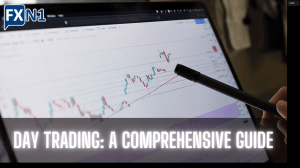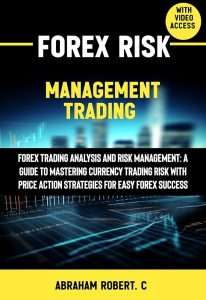Understanding Forex Trading Times: A Comprehensive Guide
Unlock the secrets of Forex trading times! Learn how to navigate the 24/5 market, maximize profits, and minimize risks with our expert guide. Dominate the global Forex market – start now!
The foreign exchange market, or Forex, operates 24 hours a day, five days a week. This continuous trading cycle presents both incredible opportunities and significant challenges for traders. Understanding Forex trading times is crucial for maximizing profits and minimizing risks. Effective strategies hinge on recognizing the nuances of different market sessions and their impact on price volatility and liquidity. This comprehensive guide will delve into the intricacies of global Forex trading hours, helping you navigate this dynamic market with confidence.
Understanding the Global Forex Market’s 24/5 Operation
Unlike traditional stock markets with defined opening and closing times, the Forex market is decentralized and operates across multiple global financial centers. This means trading activity is continuous, transitioning smoothly from one major market session to the next. This continuous nature presents both advantages and disadvantages. The constant liquidity can provide ample trading opportunities, but it also requires constant vigilance and adaptability from traders.
The seamless transition between sessions means that traders need to be aware of the overlap periods, where two or more major markets are simultaneously active; This overlap often leads to increased liquidity and volatility, creating both exciting possibilities and potential risks that must be carefully managed.
The Significance of Overlapping Trading Sessions
The overlap between sessions is a key aspect of Forex trading. For instance, when the London session overlaps with the New York session, there’s a significant surge in trading volume and volatility. This period presents excellent opportunities for scalpers and day traders who can capitalize on short-term price fluctuations. However, it also carries higher risks due to the increased speed and unpredictability of price movements.
Understanding these overlapping periods allows traders to strategically plan their trading activities. They can choose to focus on periods of higher liquidity for better execution or avoid highly volatile periods to mitigate risk. Careful analysis of historical data during these overlap periods can reveal patterns and trends that can inform trading decisions.
The Major Forex Trading Sessions
The Forex market is primarily driven by the trading activities in four major financial centers: Sydney, Tokyo, London, and New York. These centers, operating in different time zones, create a continuous trading cycle that spans the globe. Each session has its own unique characteristics, influencing liquidity, volatility, and trading opportunities.
The Sydney Session
The Sydney session is the first to open, setting the tone for the day’s trading. It operates during the Asian trading hours, typically from 5:00 PM to 2:00 AM Eastern Standard Time (EST). While generally less volatile than other sessions, it can still offer significant trading opportunities, particularly for those focusing on Asian currency pairs.
The Tokyo Session
The Tokyo session, overlapping with the Sydney session, is a crucial part of the global Forex market. It runs from approximately 7:00 PM to 4:00 AM EST, bringing in substantial trading volume from Japan and other Asian countries. This session often sees significant price movements, particularly in Yen-related pairs.
The London Session
The London session is often considered the most influential session, characterized by high liquidity and volatility. It operates from roughly 3:00 AM to 12:00 PM EST, during which many major global banks and financial institutions participate actively. The London session’s influence on price trends is substantial, making it a key focus for many Forex traders.
The New York Session
The New York session, overlapping with the London session, is the final major session of the day. Running from 8:00 AM to 5:00 PM EST, it involves considerable trading activity from North America. This session’s influence is significant, especially for US dollar-related pairs.
Strategies for Optimizing Your Trading Based on Forex Times
Effective Forex trading requires a deep understanding of these different sessions and how they interact. By aligning your trading strategy with the characteristics of each session, you can enhance your chances of success.
Scalping and Day Trading
Scalpers and day traders often benefit from the increased volatility and liquidity during overlapping sessions. They can capitalize on short-term price fluctuations, aiming for quick profits. However, this requires careful risk management and a keen understanding of market dynamics.
Swing Trading
Swing traders, on the other hand, might focus on longer-term price movements, capitalizing on trends that emerge across multiple sessions. They might identify trends during the London or New York sessions and hold positions for several days or weeks.
Position Trading
Position traders employ a long-term perspective, holding positions for months or even years. Their trading strategies are less influenced by daily or weekly market fluctuations, focusing instead on fundamental analysis and long-term market trends.
Factors Affecting Forex Trading Times and Volatility
Several factors beyond the standard sessions influence Forex trading times and volatility. Understanding these factors is crucial for navigating the market effectively.
- Economic News Releases: Major economic data releases, such as employment figures or inflation reports, can cause significant price swings, regardless of the specific session.
- Geopolitical Events: Global events, such as political instability or natural disasters, can also impact market sentiment and create unexpected volatility;
- Holidays: Public holidays in major financial centers can affect trading volume and liquidity, sometimes leading to reduced activity or increased volatility.
- Algorithmic Trading: The increasing use of automated trading systems can influence market dynamics, introducing both opportunities and risks.
Tools and Resources for Tracking Forex Trading Times
Numerous tools and resources are available to help traders track Forex trading times and market activity. These tools provide real-time information on market conditions, enabling informed decision-making.
- Forex Trading Platforms: Most Forex trading platforms offer built-in tools to visualize trading sessions and market conditions.
- Economic Calendars: Economic calendars provide schedules of upcoming economic news releases, allowing traders to anticipate potential market movements.
- Forex Market News Websites: Numerous websites provide real-time market news and analysis, keeping traders informed about global events.
- Trading Journals: Maintaining a detailed trading journal is crucial for tracking your trading performance and identifying areas for improvement.
Developing a Successful Forex Trading Strategy
A successful Forex trading strategy requires a combination of technical analysis, fundamental analysis, and a deep understanding of market dynamics. By incorporating knowledge of Forex trading times and the factors influencing market volatility, you can significantly improve your trading performance.
Thorough research, risk management strategies, and consistent practice are essential for success in Forex trading. Remember, discipline and patience are key to navigating this complex and dynamic market.
Continuous learning and adaptation are vital in the constantly evolving Forex market. Stay informed about market trends, economic developments, and new trading techniques to maintain a competitive edge. Always remember that Forex trading involves inherent risks, and losses are possible.
Successful Forex trading requires meticulous planning, consistent execution, and the ability to adapt to changing market conditions. By mastering the intricacies of Forex trading times and integrating this knowledge into your overall trading strategy, you can significantly increase your chances of achieving your financial goals. However, always remember to trade responsibly and within your risk tolerance.
The journey to becoming a proficient Forex trader is a continuous process of learning, adaptation, and refinement. Consistent effort, combined with a well-defined strategy, will ultimately lead to improved trading results. Embrace the challenge and enjoy the journey of mastering this complex yet rewarding financial market.







